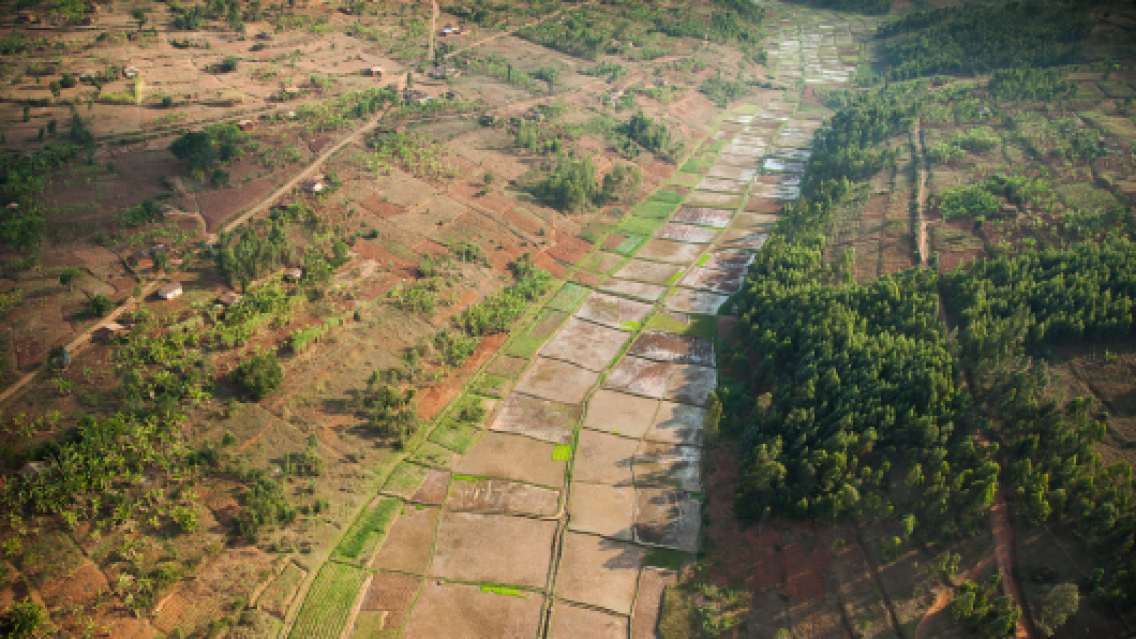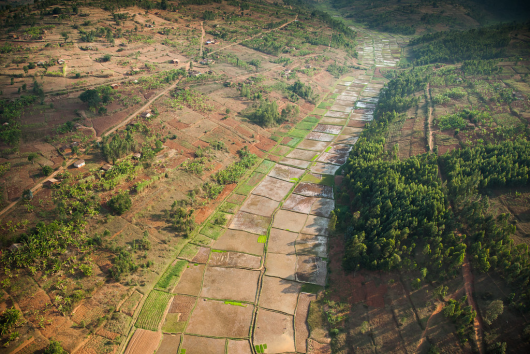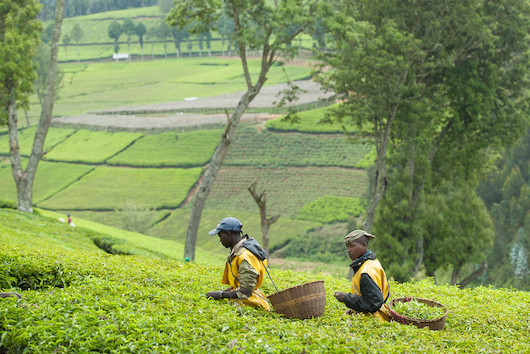RCMRD, SERVIR Partnership Supports Rwanda's Leadership in Sustainable Land Management

This post was written by Phoebe Oduor from SERVIR-Eastern & Southern Africa/RCMRD and Jake Ramthun from the NASA SERVIR Science Coordination Office, and was originally featured on Climatelinks. Click here to go to the original blog post.
Rwanda is among the smallest countries in mainland Africa, roughly the size of Maryland with twice the population. Less land area means harder decisions, such as balancing land allocated for agriculture versus areas designated for forest conservation. Within its small territory, Rwanda has one of the world’s fastest-growing economies, as well as large refugee communities to protect and important natural habitats to conserve. Despite the challenges of balancing sustainability with social and economic needs, Rwanda has emerged as a world leader in climate action. Though already in the bottom ten countries in terms of carbon dioxide (CO2) emissions per capita, Rwanda plans to reduce emissions by 16 percent by 2030. To help reach that goal, SERVIR is helping make land management decisions a little easier.
 |
| Rice paddies in Rwanda. Photo credit: World Bank. Creative Commons license BY-NC-ND 2.0 |
SERVIR, a collaboration between USAID, NASA, and regional partners around the world, helps developing regions build capacity to use satellite data to support sustainable development. The SERVIR-Eastern and Southern Africa (E&SA) hub, based at the Regional Centre for Mapping of Resources for Development (RCMRD) in Kenya, has supported land use and land cover (LULC) mapping across the region since 2012.
“RCMRD was and is a key partner to the Rwanda Natural Resources Authority [RNRA],” said RCMRD Director General Dr. Emmanuel Nkurunziza. Nkurunziza previously served as Director General of the RNRA from 2011 to 2017, and oversaw the beginnings of the LULC mapping partnership. “At the time, as the Director General of RNRA, RCMRD [and SERVIR-E&SA] played a critical role in providing data that we leveraged to respond to the land use data requirements for the Third National Communication to the United Nations Framework Convention on Climate Change [UNFCCC].”
Originally, this information was intended to help countries monitor and report their “Nationally Determined Contributions” (NDCs) of CO2 to the UNFCCC. Different natural landscapes store different amounts of CO2 depending on the type and density of vegetation. LULC data and maps help countries monitor the amount of vegetation that is gained or lost over time, and by extension, measure changes in how much CO2 is stored. With this information, Rwanda can carefully monitor emissions and make decisions that balance sustainability with other community needs, as well as report to the UNFCCC. This type of reporting is in especially high demand since the 2015 Paris Climate Agreement, which relies on NDCs to set benchmarks for individual countries to reduce emissions.
 |
| Tea farmers in Rwanda. Photo credit: World Bank. Creative Commons license BY-NC-ND 2.0 |
In addition to helping keep up with Paris Agreement guidelines, SERVIR’s LULC maps and data are used to make other land management decisions, like planning ecosystem restoration and protecting against disasters. In short, these resources help mitigate climate change and assist communities with proactively adapting to climate change, biodiversity loss, and natural hazards.
Additionally, Rwanda and SERVIR-E&SA are making their land cover mapping data free and publicly accessible. This empowers more people to participate in Rwanda’s climate leadership—creating an inclusive push for sustainability that incorporates grassroots community engagement and government intervention.
Climate change and rapid economic growth strain natural landscapes, and many countries may soon encounter land management challenges similar to Rwanda’s. Research collaborations and sustainable practices developed in Rwanda are vital for the country’s benefit and can provide a model for other countries.
In Rwanda’s latest NDC Report, Minister of Environment Dr. Jeanne d’Arc Mujawamariya put her country’s support for sustainable land management into context: “The path towards low-carbon, climate-resilient development has been prioritized not only by the Government of Rwanda, but also the people of Rwanda, as the most desirable way forward to realize a sustainable future for generations to come.”

